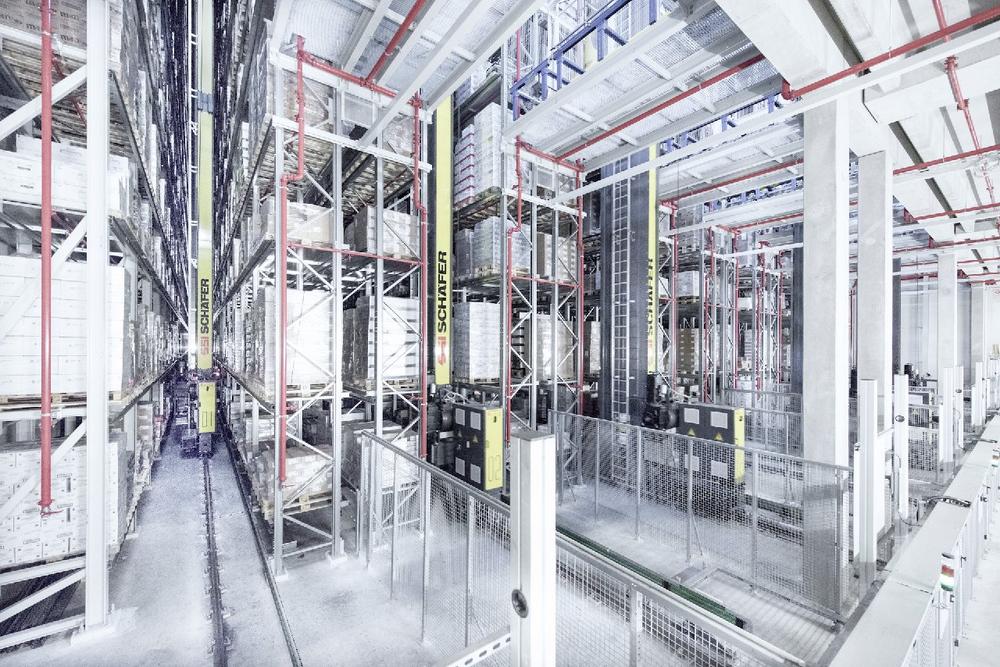Dmitry Ellin, Head of Pre-Sales and automation expert at SSI Schaefer, describes the most common automation myths and explains why they do not always correspond to reality and what automation really is about.
Myth No. 1
Everyone needs automated processes
Future-oriented companies may think that the implementation of fully automated systems is necessary for all logistics centers without exception. But this is not always the case. For companies with a small assortment, a small number of goods or a small storage capacity, a manual or partially automated solution that grows with the customer can be the better option. This is especially true if no future expansion is planned. In such a case it often is more efficient for companies to process and dispatch small order quantities semi-automatically or manually.
Myth No. 2
Automation of all processes takes a lot of time
At first glance, complete warehouse automation seems quite time-consuming – for several reasons: First, the required equipment must be defined, the initial design concept developed and the solution selected according to the customer’s expectations and budget. Only then installation and commissioning processes can start. Automation during plant operation is a particular challenge. Careful planning is necessary to ensure a smooth transition. The advantages of automated systems such as optimized storage space, scalability and ergonomics can then already be exploited during the construction phase. A partial or full automation of existing logistics centers is of course more time-consuming compared to greenfield projects, but it can be carried out during ongoing plant operation. During the project planning phase it is therefore already important to compare strategic business plans and expectations concerning logistics with future plans of the customer in order to choose between the modernization of the existing plant and the construction of a new one.
Myth No. 3
Automation leads to loss of control in the process
On the contrary, automation leads to more control through the use of a software. The used logistics software monitors the processes and visualizes detailed information on the available articles. It not only visualizes the system, but also the material flow, displays key performance indicators and provides extensive control options.
Myth No. 4
Automation requires personnel changes
Automation or modernization of the warehouse does not necessarily mean additional costs or high expenditure of time for the training of employees, nor their replacement. Automated logistics processes are easy to use thanks to user-friendly interfaces so that staff can carry out their instructions without extensive experience or training and will be instead entrusted with more responsible tasks in the future. Compared to manual processes without automated quality control, the probability of errors is reduced to a minimum. Another important advantage of automation is the increased safety level – particularly important, for example, when working in high-bay warehouses. In addition, the goods-to-person principle enables the highest picking quality by delivering the goods directly to the picking workstation.
Myth No. 5
The integration of all processes into a single system is too difficult
What is often neglected during the system changeover is the data migration during the introduction or changeover to a highly automated warehouse system. If a company already uses manual and semi-automated systems to manage warehouse activities, important information and data is available. Their migration must be well prepared with a well-founded analysis – and is extensive but target-oriented. If a company already uses a warehouse management system, integration is significantly smoother and faster.
Myth No. 6
Automation is always too expensive
At first glance, the acquisition costs of automated solutions appear to be higher than the financial costs of manual systems. Their use, however, brings with it a quick return on investment (ROI). Depending on the scope, the costs will be completely amortized within three to five years. Automation is an investment in the future and, therefore, quality is a decisive factor: Poor quality can lead to costly downtimes or further expenses in the long run. Depending on the corporate strategy and development, a step-by-step integration of automated systems is, for example, recommended. Investments and process modernizations are then carried out step by step and the technical performance is slowly increased.
The SSI Schaefer Group is the world’s leading provider of modular warehousing and logistics solutions. It employs approximately 10,500 people at its group headquarters in Neunkirchen (Germany), at eight domestic and international production sites, and at approximately 70 worldwide operative subsidiaries. Across six continents, SSI Schaefer develops and implements innovative industry-specific answers to its customers‘ unique challenges. As a result, it plays a key role in shaping the future of intralogistics.
SSI Schaefer designs, develops and manufactures systems for warehouses, industrial plants, workshops and offices. Its portfolio includes manual and automated solutions for warehousing, conveying, picking and sorting, plus technologies for waste management and recycling. In addition, SSI Schaefer is now a leading provider of modular, regularly updated software for in-house material flows. Its IT team, with a headcount in excess of 1,100, develops high-performance applications, and provides customers with in-depth advice on the intelligent combination of software with intralogistics equipment. SSI Schaefer’s broad IT offering, including its own WAMAS® and SAP products, delivers seamless support for all warehouse and material flow management processes. Solutions from SSI Schaefer improve the productivity and efficiency of customer organizations – not least through the highly precise monitoring, visualization and analysis of operational metrics for proactive intralogistics management.
SSI Schaefer offers highly sophisticated, turnkey systems. As an international player, it can deliver one-stop solutions to all four corners of the earth. Its comprehensive portfolio encompasses design, planning, consulting, and customer-specific aftersales services and maintenance.
SSI SCHÄFER
Fritz-Schäfer-Strasse 20
57290 Neunkirchen / Siegerland
Telefon: +49 (2735) 70-1
Telefax: +49 (2735) 70-396
http://www.ssi-schaefer.de
Marketing & Kommunikation
Telefon: +49 (2735) 70-252
Fax: +49 (2735) 70-382
E-Mail: melanie.kaempf@ssi-schaefer.de
Junior Project Manager CR & PR | Global Marketing
Telefon: +49 (2735) 70-9683
Fax: +49 (2735) 70-382
E-Mail: Annika.Nolte@ssi-schaefer.com
![]()
